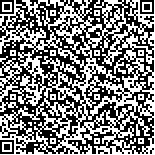下载中心
优秀审稿专家
优秀论文
相关链接
摘要

人们用语言描述空间关系时所选用的词汇反映了他们对于物体空间状态的认识.语言如何表达空间关系与很多因素有关,除了空间实体的特征和它们之间的空间关系,描述者个人的特征也影响到描述的语言,例如描述者的语言和文化上的差异,以及性别、年龄和受教育程度等.本文将通过认知实验,比较不同语言、文化背景的人对线状物体空间关系描述的理解.主要对比了两组人群:母语为英语的人群和母语为汉语的人群.共进行了3组实验:母语为英语的人群对英语描述的线状物体空间关系的理解;母语为汉语的人群对英语描述的线状物体空间关系的理解;以及母语为汉语的人群对汉语描述的线状物体空间关系的理解.采用相同的题目,比较了3组实验的结果.结果表明语言文化在一定程度上影响了人们对空间关系描述的理解.
The problem existing in currentGISs is that they all use quantitativemethods to store and retrieve spatial\ninformation.However, people usually use qualitative terms to describe spatial relations.CurrentGISmodels are lmi ited in\ntheir capacities of representation ofspatial information aboutgeographic space. Ifwewant to‘translate’natural languages\nabout spatial information to formal languageswhich computers can understand, wemustknow how natural languages con-\nstruct and understand spatial relations.The description ofa spatial relation is the reflection ofhuman s cognition of spatial\nobjects. It is notonly affected by the topology andmetric, butalso affected by the individual characteristics ofdescribers.\nTo disclose the effectsofculture and language on people sperceiving and understanding ofspatial relations, thispaper first\ncompared the syntactic expressions of spatial relations in English and in Chinese, then three human-subject tests about\nspatial relations between two linear geographic objectswere conducted in two groups ofpeoplewho are native speakers of\nChinese and English: nativeEnglish speakerswere tested on English expressions; nativeChinese speakerswere tested on\nChinese expressions; and native Chinese speakers tested on English expressions.The results of the testswere analyzed to\nfind whetherdifferentgroups ofpeople have differentunderstanding on the natural-language description ofspatial relations\nbetween two linear objects. Itwas found that in some cases two groups ofpeople have completely different opinions about\nthe descriptions of spatial relations.NativeEnglish speakershavemore extreme opinions of“strongly agree”and“strongly\ndisagree”for every spatial relation determination, while nativeChinese speakershavemoremoderate opinions. It indicated\nthat cultures and languagesmighthave effects on spatial cognitions.Butwhen the same group of people were tested with\ndifferent languages, the results showed there is nomuch difference, which indicated thatwhen they read a description of\nspatial relation in English, Chinese speakers translated it to corresponding Chinese words and actually understood the\nmeanings of thoseChinesewords, although themeaning of these two expressions are slightly different. Italso suggested the\ncorrespondingwords thatwe use to translate between two languages are actuallynotexactly the same.The expermi entshelp\nus in discovering how people in different cultures and languages perceive and express spatial relations, so thatwe can\nbuild an intelligentGIS based on common sense ofgeography.

